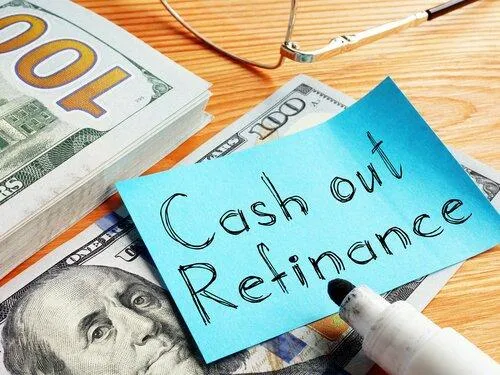OUR RIDE BLOG

We do a lot of riding/writing around here! From mountains to mortgages, this is where you can see all the fun
we’re having.

What is a Cash-Out Refinance?
What is a Cash-Out Refinance?
A cash-out refinance replaces your current home with a new mortgage plan for more than you currently owe on your house. The extra money based on the amount goes to you in cash and you can use it on home improvements, consolidating your debts or other financial requirements you might have. However, you need to have equity built up in your house in order for you to qualify for a cash-out refinance.
In contrast with traditional refinancing, cash-out refinance replaces your existing home loan with a new one for the same amount of balance. Here’s how this works:
You are paid the difference of your home loan balance and the value of your property.
Usually, this offers a bit higher interest rates because of a higher loan amount.
This provides limits on cash-out amounts to 80% to 90% against the equity of your home.
A cash-out refinance allows the borrower to convert home equity into cash by making a new loan for a bigger amount than what is currently owed. The borrower will receive the difference in cash between the two loans. This is doable because the borrower only owes what is left on the amount of the original mortgage. The added loan amount of the cash-out refinanced mortgage is paid in cash to the borrower at the closing.
Pros and Cons of Cash-Out Refinance
Among the biggest advantage of cash-out refinance is debt consolidation. Because of the extra money you receive at closing, you can use to pay off other high interest loans and save thousands of dollars in interest. But on the other hand, because of your new mortgage, you will have different terms than your original loan. To avoid incurring high interest loans, you need to double check the interest rate and other fees before agreeing to the new terms. This is also a foreclosure risk because your home serves as the collateral for any kind of mortgage. If you can’t make the payments, you risk losing it.
Refinancing your loan through a newly structured mortgage can give you the chance to look for other financial institutions that can provide new financing alternative with an interest rate much lower and more flexible payment than your previous home loan agreement. Today, even an increment of less than one percent can make a harsh effect particularly for individuals with bigger interest rates because it only means that they need to pay much higher interest rates as compared to what they originally signed up for.

What is a Cash-Out Refinance?
What is a Cash-Out Refinance?
A cash-out refinance replaces your current home with a new mortgage plan for more than you currently owe on your house. The extra money based on the amount goes to you in cash and you can use it on home improvements, consolidating your debts or other financial requirements you might have. However, you need to have equity built up in your house in order for you to qualify for a cash-out refinance.
In contrast with traditional refinancing, cash-out refinance replaces your existing home loan with a new one for the same amount of balance. Here’s how this works:
You are paid the difference of your home loan balance and the value of your property.
Usually, this offers a bit higher interest rates because of a higher loan amount.
This provides limits on cash-out amounts to 80% to 90% against the equity of your home.
A cash-out refinance allows the borrower to convert home equity into cash by making a new loan for a bigger amount than what is currently owed. The borrower will receive the difference in cash between the two loans. This is doable because the borrower only owes what is left on the amount of the original mortgage. The added loan amount of the cash-out refinanced mortgage is paid in cash to the borrower at the closing.
Pros and Cons of Cash-Out Refinance
Among the biggest advantage of cash-out refinance is debt consolidation. Because of the extra money you receive at closing, you can use to pay off other high interest loans and save thousands of dollars in interest. But on the other hand, because of your new mortgage, you will have different terms than your original loan. To avoid incurring high interest loans, you need to double check the interest rate and other fees before agreeing to the new terms. This is also a foreclosure risk because your home serves as the collateral for any kind of mortgage. If you can’t make the payments, you risk losing it.
Refinancing your loan through a newly structured mortgage can give you the chance to look for other financial institutions that can provide new financing alternative with an interest rate much lower and more flexible payment than your previous home loan agreement. Today, even an increment of less than one percent can make a harsh effect particularly for individuals with bigger interest rates because it only means that they need to pay much higher interest rates as compared to what they originally signed up for.












